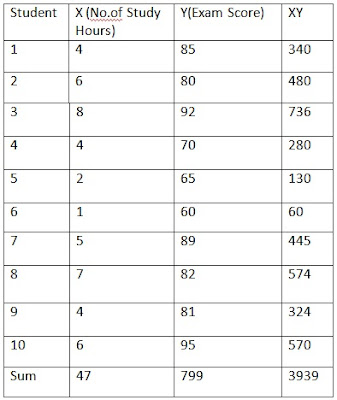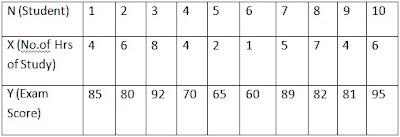Statistics – Correlation
In Statistics Correlation denotes the relation between to variables. If change in one variable is initiating change in the other variable then it is said that there is a correlation between them. There are two kinds of correlation. One is Positive Correlation and the other is Negative Correlation.
Positive Correlation is said to exist when a change in one variable is causing a positive change in the other variable as well then it is called Positive Correlation. For example, there is said to be a Positive Correlation between Income and spending. As income increases so is the purchasing power and spending.
Negative Correlation on the other hand is a positive change in one variable causes a negative change in the other variable. The best example for this is the demand theory in Economics. We all know that when price of a product increases then the demand of that product decreases and when the price of the product decreases then the demand increases.
The result of Correlation can only range between -1.00 and +1.00. If the answer is -1.00 then it is called perfect Negative Correlation and +1.00 denotes a perfect Positive Correlation. 0.00 denotes that there is no correlation at all.
Let us understand the process of Correlation with a good example.

Now, the formula for Correlation Coefficient or Karl Pearsson Correlation (r) is
Here, we can observe that the ∑XY = 3939; N¯X ¯Y is the means of X and Y, calculated to be 4.7 and 79.9 respectively. Standard Deviation is denoted by Sx and Sy which are calculated to be 2.1628 and 11.5706. When we apply the values we get
r = (1/(10-1 ) (3939-10(4.7)(79.9) ))/((2.1628)(11.5706))
r = (1/(9 ) (3939-3755.3))/25.0249 = (1/(9 ) (183.7))/25.0249 = 20.4111/25.0249 =
0.8156 = 0.82
The Coefficient Determination = r2 = 0.822 = 0.67 or 67%.
Therefore, we can conclude that the score in exams is directly related to the number of hours studied to a significant extent. And we can say that there is a positive correlation between the Number of hours Studied and the Scores obtained in Exams.
At HelpWithAssignment.com we provide best quality Assignment help, Homework help, Online Tutoring and Thesis and Dissertation help as well. For any of the above services you can contact us at https://www.helpwithassignment.com/ and
https://www.helpwithassignment.com/statistics-assignment-help
This article is in continuation with our previous articles on Statistics,Statistics Assignment help.
Book Your Assignment
Recent Posts

How To Prepare An Excellent Thesis Defense?
Read More
How to Restate A Thesis? – A Detailed Guide
Read More
Explanatory Thesis: Examples and Guide for Clear Writing
Read More
How To Write 3 Types Of Thesis Statements?
Read More
How to Effectively Prepare for Your Thesis Defense?
Read MoreGet assignment help from subject matter experts!
4.7/5 rating | 10,000+ happy students | Great tutors 24/7

